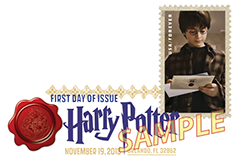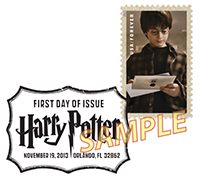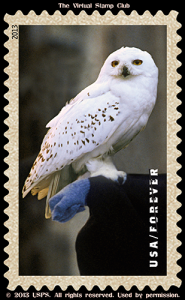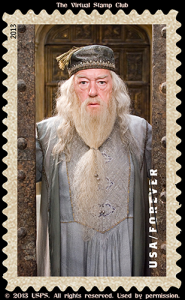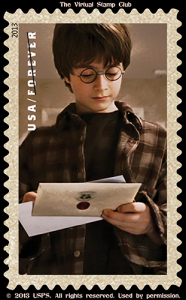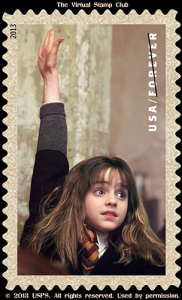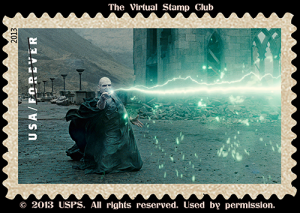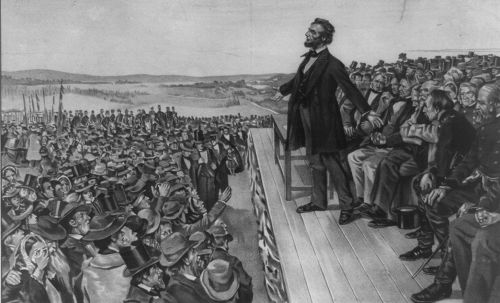 [USPS press release]
[USPS press release]
Despite Revenue Growth and Record Productivity, Postal Service Loses $5 Billion in 2013 Fiscal Year
·Revenue Increase Driven by 8 Percent Growth in Shipping and Packages, 3 Percent usps_mailboxpickupGrowth in Standard Mail; First-Class Mail Continues to Decline
· Nearly $1 Billion in Savings Driven by Work Hours Reduction of 12 Million Hours and Optimizing Workforce Flexibility
·Substantial Deficit Liabilities of $61 Billion Exceed Assets by Approximately $40 Billion
WASHINGTON — The U.S. Postal Service ended the 2013 fiscal year (Oct. 1, 2012 – Sept. 30, 2013) with a net loss of $5 billion. This marks the 7th consecutive year in which the Postal Service incurred a net loss, highlighting the need to continue to capitalize on growth opportunities, reduce costs, and enact comprehensive legislation to provide a long-term solution to the agency’s financial challenges.
Even though the Postal Service has implemented a number of strategies that resulted in $15 billion in annual expense reductions since the Postal Accountability and Enhancement Act was passed in 2006, the combination of onerous mandates in existing law and continued First-Class Mail volume declines threatens the Postal Service’s financial viability.
“We’ve achieved some excellent results for the year in terms of innovations, revenue gains and cost reductions, but without major legislative changes we cannot overcome the limitations of our inflexible business model,” said Patrick Donahoe, Postmaster General and Chief Executive Officer. “Congress is moving forward with legislation that has the potential to give us greater flexibility and put us back on a firm financial footing, and we strongly encourage that they continue moving forward.”
The legislative requirements put forward by the Postal Service, as outlined in the Five-Year Business Plan, include:
· Restructure the Postal Service health care plan.
· Refund Federal Employees Retirement System (FERS) overpayment and lower future FERS payment amounts to those required.
· Adjust delivery frequency to six-day packages/five-day mail.
· Streamline the governance model (eliminate duplicative oversight).
· Provide authority to expand products and services.
· Require defined contribution retirement system for future Postal Service employees.
· Require arbitrators to consider the financial condition of the Postal Service.
· Reform Workers’ Compensation.
Results of Operations
Highlights of yearly results compared to the same period last year include:
· Total mail volume was 158.4 billion pieces compared to 159.8 billion pieces a year ago. Package and Standard Mail volumes grew by 210 million pieces and 1.4 billion pieces, respectively, while the most profitable product, First-Class Mail, fell by 2.8 billion pieces, led by single-piece volume decline.
· Operating revenue, excluding a $1.3 billion non-cash change in an accounting estimate, was $66 billion compared to $65.2 billion in 2012. While this is the first growth in revenue since 2008, declining First-Class Mail revenue continues to negatively impact financial results.
· Operating expenses were $72.1 billion in 2013 compared to $81 billion in 2012. Approximately $8.2 billion of this decrease resulted from higher, legally mandated retiree health care benefit expenses and higher non-cash Workers’ Compensation expense in 2012. Expenses in 2013 include a required $5.6 billion contribution to retiree health care benefits that the Postal Service was unable to make. Continued lack of legislation will likely force the Postal Service to continue to default on these payments. Savings from plant consolidations, restructuring hours at Post Offices, reductions in delivery units, and workforce optimization resulted in approximately $1 billion of savings in 2013.
· The net loss for the year, which was decreased by a $1.3 billion non-cash change in estimate, was $5 billion. However, this change in accounting estimate has no impact on the Postal Service’s receipt of cash, or cash on hand, nor does it lessen the severity of its current liquidity situation. For more information regarding the non-cash adjustment, refer to the Form 10-K, available online.
The Postal Service continues to grow its Package Services business. From fiscal year 2012 to fiscal year 2013, revenue from Package Services increased by $923 million, or 8 percent, on a volume increase of 210 million pieces (6 percent). By developing innovative services to appeal to the growing parcel delivery market, Shipping and Package Services grew to $12.5 billion, representing approximately 19 percent of revenues. Standard Mail revenue grew by $487 million, or 3 percent, on a volume increase of 1.8 percent.
The growth in revenue from these products is not enough to offset the long-term loss in revenue and volume of our most profitable service, First-Class Mail. First-Class Mail revenue, which peaked in 2007, dropped $704 million or 2.4 percent in 2013. First-Class Mail volume declined 2.8 billion pieces or 4.1 percent.
“Our productivity reached an all-time high in 2013, increasing 1.9 percent, compared to 2012,” said Chief Financial Officer and Executive Vice President Joseph Corbett. “This marks our fourth consecutive year of positive total factor productivity growth since the depths of the recession in 2009.”
Work hours in 2013 decreased by 12 million or 1.1 percent, despite an increase of approximately 774,000 delivery points during 2013.
“The reduction in work hours and the optimization of work force flexibility that we have available to us contributed to a savings of nearly $1 billion in compensation and benefits costs,” said Corbett, “a reflection of our efforts to improve productivity and to respond to the decline in mail volume.” Since 2000, the Postal Service has reduced work hours by a cumulative total of 516 million work hours, equivalent to 293,000 employees, or $22 billion in annual expense savings.”
At the end of the 2012 fiscal year, the Postal Service reached its statutory debt ceiling of $15 billion for the first time, and it remains at the limit at the end of the 2013 fiscal year. “Our liquidity continues to be dangerously low and our liabilities exceed our assets by approximately $40 billion,” said Corbett. “This underscores the need for Congress to pass legislation that improves our financial position and that gives the Postal Service a more flexible business model to improve its cash flow. Despite reaching the debt limit, Postal Service mail operations and delivery continue as usual and employees and suppliers continue to be paid on time.”
Complete financial results are available in the Form 10-K, available after 11 a.m. ET today at http://about.usps.com/who-we-are/financials/welcome.htm
 My local paper has been running a “Where were you on November 22, 1963” features this month. Like most of us, I know exactly where I was, and it has a philatelic connection, but I’ve always had misgivings about it. But, after reflecting on the significance of the date, and real
My local paper has been running a “Where were you on November 22, 1963” features this month. Like most of us, I know exactly where I was, and it has a philatelic connection, but I’ve always had misgivings about it. But, after reflecting on the significance of the date, and real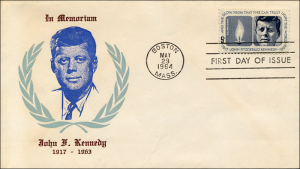 izing that we can’t hold a 10-year-old boy to adult standards, I’ll tell the story.
izing that we can’t hold a 10-year-old boy to adult standards, I’ll tell the story.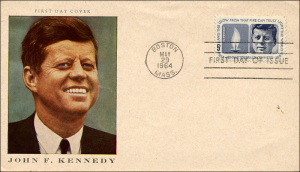 and, just like adults then and now, our weekly “hobby time” stamp sessions had become largely buy/sell/trade sessions. Mrs. Meade wasn’t happy about that.
and, just like adults then and now, our weekly “hobby time” stamp sessions had become largely buy/sell/trade sessions. Mrs. Meade wasn’t happy about that.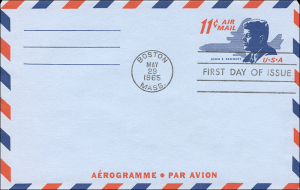 We never had hobby time again, reinforcing my suspicion.
We never had hobby time again, reinforcing my suspicion.

 [USPS press release]
[USPS press release]





